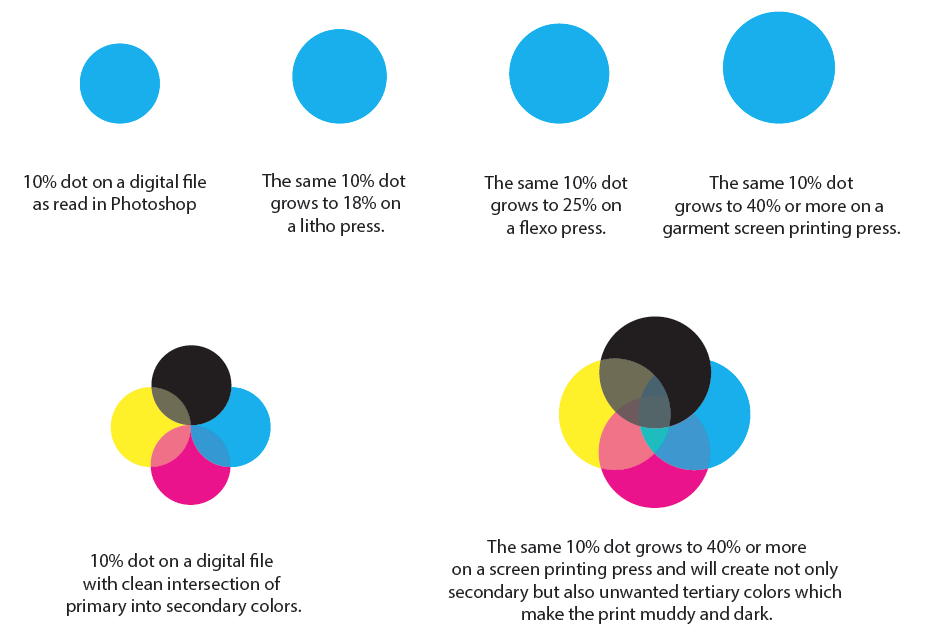

For those who need more information, Chapter 11 in the book covers it in detail). If you're familiar with overprints and knockouts (or are a trapping freak), this is a simple concept. An overprint is a command that tells the printer not to remove the background colors that appear beneath the object that appears on top. However, in this case, where you WANT the drop shadow to blend into the background on press, you have to override that knockout by specifying something called an overprint. In our case of the red and blue colors, the result would be purple in appearance. Otherwise, the top color will print on top of the bottom color when the paper is run through the printing press, causing the two inks to mix. By default, when one color sits on top of another color, a knockout occurs - meaning the area beneath the top shape is removed from the lower object. In this case, the shadow, which is PMS Blue 072, blends right into the PMS Red 032 background.

When you have a transparent effect, the result is a mixture of the inks. The key items to focus on here are that you have used a transparent effect, and you've used a spot color. So this is what I refer to when I say that the "planets need to be aligned" in order for this phenomenon to occur.

So what gives? Why does it appear to be so inconsistent? And the totally wacky thing is that sometimes, when you fiddle with enough settings, you find that the file DOES print correctly, even when you print a composite proof. Because when you choose to print as separations (many designers are trained to do this, to check that the plates appear correct before sending out to the printer), the color-separated plates - in this case, two of them - appear correct.
Basic spot color separation inside photoshop pdf#
The "problem" that arises is that when you open the PDF in Adobe Acrobat, or Adobe Reader, or when you place the file into QuarkXPress or InDesign and print the file to your laser or inkjet printer, it comes out looking incorrect - with a white box where the transparent effect should be (see below).īut that white box isn't what causes the head scratching and the frustration. (If you're unfamiliar with transparency flattening, you can get some information here and here.) The point here to focus on is that you're saving your file to a flattened format. (By the way, if you're saving your file as EPS and you're placing it into InDesign, shame on you, and read this.) Alternatively, you save your file as an EPS because maybe you're required to place this logo into a QuarkXPress document. Or you save your document using Acrobat 4 (PDF 1.3) compatibility. Then you save the art as a PDF/X-1a file because it will be used in an ad and you want to make sure that it will print correctly. On Illustrator's artboard, the logo appears correct (see below). The logo has a drop shadow behind it, and you've correctly set Illustrator's Drop Shadow feature to use the Blue 072 spot color, not black. You create a logo that contains two spot colors (in this case, I've used PMS Blue 072 and PMS Red 032). All of the concepts covered in this post apply to all three apps (hey, we may even squeeze Quark in at the end - that's me - always doing the unexpected). Before I even get started by the way, I think it's important to state that today's lesson covers not just Illustrator, but InDesign and Acrobat as well. My goal here today is to make it all crystal clear. But it's one of those things that occur only when certain planets are aligned, and so it seems as if it's inconsistent behavior. And the thing is, the people who ask these questions really do understand what transparency is, how it works, and what it's all about. One particular issue that seems to always come up is around the subject of transparency.

Sometimes, as soon as someone starts asking a question, I already know what they are going to ask about. I do enough public speaking and work with enough clients that I often hear the same questions repeated.


 0 kommentar(er)
0 kommentar(er)
